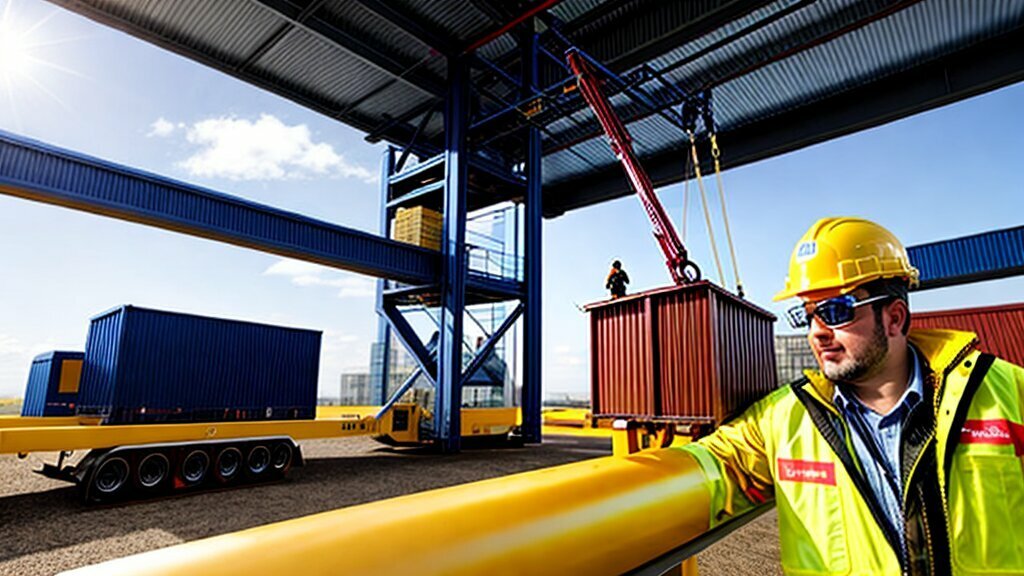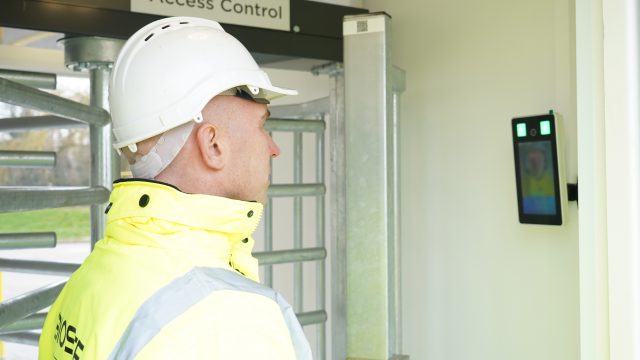From Drones to BIM: How Tech Tools are Reshaping Construction Site Management
Welcome to the digital age of construction site management. The integration of technology tools has transformed the way construction sites are managed, providing better safety, increased efficiency, and streamlined communication among team members.
Drones and building information modelling (BIM) are just a few examples of how technology has revolutionized the industry. In this article, we will explore the various tech tools reshaping construction site management and their impact on the industry.
Key Takeaways
- Technology tools have significantly improved construction site management by enhancing safety, streamlining processes, and increasing productivity.
- Drones are being used for site surveillance, safety inspections and data collection, improving construction site productivity.
- Building Information Modeling (BIM) software enables better collaboration between stakeholders, improves project efficiency, and minimizes error during construction.
The Role of Technology in Construction
The construction industry has historically been associated with manual labour and traditional building methods. However, with the advent of technology, the industry is experiencing a transformation. Technology is playing an increasingly important role in construction site management, revolutionizing the way projects are designed, built, and managed.
From aerial drones to building information modelling (BIM), technology is enabling improved safety, greater productivity, and streamlined processes. It is also facilitating better communication and collaboration between stakeholders, making construction projects more efficient and cost-effective.
As the industry evolves, so too must construction professionals adapt to new technologies. Those who embrace the latest tools and techniques will gain a competitive edge, while those who resist or ignore technological advancements risk falling behind.
The Benefits of Technology in Construction
Technology is transforming construction site management in a number of ways.
- Improved Safety: Drones and other technology tools are being used to conduct safety inspections and identify potential hazards, reducing the risk of accidents and injuries.
- Greater Productivity: By automating certain tasks and streamlining processes, technology is helping to increase productivity. This translates to shorter project timelines and greater efficiency.
These are just a few examples of the many benefits that technology brings to the construction industry. As technology continues to evolve, we can expect even greater advancements in construction site management.

“Technology is playing an increasingly important role in construction site management, revolutionizing the way projects are designed, built, and managed.”
Drones: Enhancing Site Surveillance and Data Collection
One of the most significant technological advancements in construction site management has been the use of drones. These unmanned aerial vehicles are being used to improve construction site surveillance, safety inspections, and data collection, ultimately enhancing construction site productivity.
Drones equipped with high-resolution cameras can be used to capture real-time footage of construction sites and provide a bird’s-eye view of the project. This can help construction managers identify potential safety hazards, monitor progress, and make informed decisions about resource allocation.
| Benefits of Drones in Construction Site Management | Challenges of Implementing Drones in Construction Site Management |
|---|---|
|
|
Despite the many benefits of using drones in construction site management, there are also challenges to overcome. Regulatory restrictions regarding drone usage and compliance, as well as security and privacy concerns, must be addressed. Additionally, the adoption of drone technology requires significant infrastructure and investment costs, technical expertise, and training requirements.
Overall, the use of drones in construction site management is a game-changer for the industry, offering numerous benefits that can improve safety, productivity, and efficiency on job sites. As drone technology continues to advance, we can expect to see even further integration of drones on construction sites, providing an even greater impact on construction site management.

Building Information Modeling (BIM): Improving Collaboration and Efficiency
Building Information Modeling (BIM) is a digital tool that is transforming the way construction projects are managed. BIM involves creating a virtual 3D model of a building that contains all project information, including architectural, structural, and engineering data. This model is then used throughout the project lifecycle to aid planning, design, and construction.
The use of BIM in construction site management has many benefits. One of the most significant advantages is improved collaboration between stakeholders. BIM software allows for real-time sharing of project information, enabling team members to view the latest updates and contribute to the project from anywhere in the world. This results in better decision-making, fewer errors, and higher quality construction projects.
BIM software also helps to improve project efficiency by automating many routine tasks and flagging potential issues early on. For example, BIM can be used to detect clashes between different building systems, such as HVAC and electrical. This ensures that potential problems are identified before construction begins, saving time and money in the long run.
Another advantage of BIM is that it enables better communication between the construction team and the building owner. BIM allows the owner to view the project in 3D and visualize the end product before construction begins. This can help to identify design issues early on and ensure that the final product meets the owner’s expectations.

In addition to these benefits, BIM can also help to reduce waste and minimize environmental impact. By simulating the construction process in a virtual environment, BIM can be used to identify opportunities to reduce material usage and optimize resource efficiency.
Overall, the use of BIM in construction site management is a game-changer that is improving collaboration, efficiency, and quality in the construction industry.
Construction Management Software: Streamlining Processes and Communication
Construction management software (CMS) has become an essential tool for construction site management, enabling teams to streamline processes and communication. CMS platforms are designed to simplify project planning, scheduling, budgeting, and reporting, ultimately increasing productivity and reducing errors.
CMS solutions range from standalone software applications to cloud-based platforms that can be accessed from anywhere. They typically offer features like project tracking, scheduling, cost management, document control, and communication tools. By centralizing project data and information, CMS helps to keep team members informed and on the same page, reducing miscommunication and increasing collaboration.
| Benefits of Construction Management Software | Examples of CMS Providers |
|---|---|
|
|
One of the main benefits of CMS is its ability to provide real-time data and analytics, enabling project managers to make informed decisions and respond quickly to changes. By integrating with other technologies like BIM and drones, CMS can further enhance construction site management, enabling teams to collect and use data more effectively. For example, CMS can integrate with BIM models to provide a comprehensive view of the project, allowing teams to identify potential issues early and make informed decisions.
Overall, CMS is becoming an increasingly valuable tool for construction site management, helping teams to work more efficiently, communicate more effectively, and ultimately, deliver projects on time and within budget.

Technology Trends in Construction Site Management
The construction industry is constantly evolving, and the advent of technology has accelerated the pace of change. Emerging technologies such as augmented reality (AR), virtual reality (VR), Internet of Things (IoT), and artificial intelligence (AI) are transforming construction site management, and their impact is only set to grow in the coming years.
Augmented Reality (AR)
AR technology provides real-time information about the construction site, enhancing the planning and execution of construction projects. AR applications can help project teams visualize designs in 3D and simulate construction processes to identify potential issues before actual construction begins. AR is also being used to train construction workers, improving safety and efficiency on the job site.
| Benefits of AR technology in construction site management: |
|---|
| Improved visualization of construction plans |
| Simulation of construction processes |
| Training of construction workers |
Virtual Reality (VR)
VR technology is being utilized in construction site management for project planning, design review, and safety training. VR allows teams to immerse themselves in a virtual environment to visualize construction processes and identify potential design issues before actual construction begins. It can also simulate hazardous construction scenarios, providing workers with valuable safety training opportunities.
| Benefits of VR technology in construction site management: |
|---|
| Improved project planning and design review |
| Simulation of hazardous construction scenarios for safety training |
Internet of Things (IoT)
IoT devices are being used on construction sites to collect real-time data on the progress of construction projects. IoT sensors can track equipment usage, monitor environmental conditions, and ensure compliance with safety regulations. This information can be used to optimize construction processes, improve efficiency, and reduce costs.
| Benefits of IoT in construction site management: |
|---|
| Real-time monitoring of construction progress |
| Safety compliance monitoring |
| Optimization of construction processes |
Artificial Intelligence (AI)
AI technology is being used in construction site management to automate various processes and improve decision-making. AI algorithms can analyze construction data and provide predictive insights that can be used to optimize construction schedules and resource allocation. AI also has the potential to improve safety on construction sites by identifying potential safety hazards and alerting workers to potential risks.
| Benefits of AI in construction site management: |
|---|
| Automated processes |
| Predictive insights for optimization of construction schedules and resource allocation |
| Identification of safety hazards for improved safety |
The use of emerging technologies in construction site management has the potential to revolutionize the industry, improving safety, productivity and efficiency. As the construction industry continues to evolve, it is essential for project teams to stay up-to-date with the latest technology trends in order to remain competitive in the market.

Overcoming Challenges and Embracing the Future
While the benefits of technology in construction site management are clear, implementing and managing these tools can present some challenges. One major obstacle is the cost associated with adopting new technology, as well as training employees to use it effectively.
Another challenge is the need for reliable connectivity and data storage capabilities, which must be in place to support the use of digital tools in construction. Additionally, some team members may be resistant to change and may require additional support and training to fully embrace the use of technology.
Despite these challenges, it is crucial for construction companies to embrace technology in order to remain competitive in the industry and meet the demands of clients and stakeholders. By investing in technology and fostering a culture of innovation, construction firms can improve their processes, increase productivity, and deliver better outcomes for their clients.
As the industry continues to evolve, it is important for construction professionals to stay informed about the latest technology trends and tools, and to be open to adopting new solutions that can enhance their work. By embracing the potential of technology, construction firms can overcome challenges and build a brighter future for the industry.

Conclusion
As we have seen, technology tools are revolutionizing construction site management. From drones to building information modeling (BIM), the use of digital tools is transforming various aspects of construction, such as safety, productivity, and efficiency.
The Future of Technology in Construction
Emerging technology trends such as augmented reality (AR), virtual reality (VR), Internet of Things (IoT), and artificial intelligence (AI) are also set to impact the industry in the coming years. These technologies offer exciting opportunities for construction firms to enhance their operations, improve collaboration, and reduce costs.
Overcoming Challenges
Of course, implementing and managing technology tools in construction site management also comes with challenges. These may include resistance to change, lack of technical expertise, and the need for ongoing maintenance and upgrades. However, by embracing these challenges and investing in the right technology tools, construction firms can stay competitive, meet future demands, and achieve greater success.
In conclusion, technology is transforming the construction industry and reshaping the way we manage construction sites. By embracing these changes, investing in technology tools, and addressing the challenges head-on, construction firms can lead the way in innovation, productivity, and success in the years to come.
FAQ
Q: How is technology reshaping construction site management?
A: Technology tools such as drones and building information modeling (BIM) are revolutionizing construction site management by improving safety, increasing productivity, and streamlining processes.
Q: What is the role of technology in the construction industry?
A: Technology plays a significant role in the construction industry by transforming various aspects of construction site management, improving safety, streamlining processes, and increasing productivity.
Q: How are drones used in construction site management?
A: Drones are enhancing site surveillance, safety inspections, and data collection in construction site management, ultimately improving construction site productivity.
Q: What is the importance of building information modeling (BIM) in construction site management?
A: Building information modeling (BIM) improves collaboration between stakeholders, enhances project efficiency, and minimizes errors during construction.
Q: How does construction management software streamline processes and communication?
A: Construction management software simplifies project planning, scheduling, budgeting, and communication among team members, thereby streamlining processes in construction site management.
Q: What are the latest technology trends in construction site management?
A: Emerging technologies such as augmented reality (AR), virtual reality (VR), Internet of Things (IoT), and artificial intelligence (AI) have the potential to make a significant impact on the construction industry.
Q: What challenges come with implementing technology tools in construction site management?
A: Implementing and managing technology tools in construction site management may come with challenges, but embracing these technologies is crucial to stay competitive in the industry and meet future demands.








